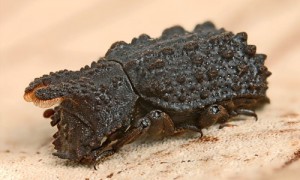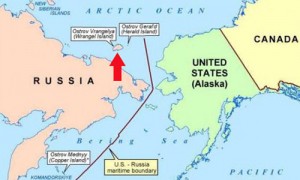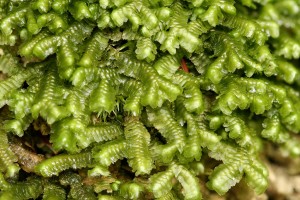 Poet, NPR commentator, novelist, literary magazine editor, travel writer, English professor, polyglot, gentleman farmer, and raconteur Andrei Codrescu is a veritable heterogenius whose remarkable new book Bibliodeath takes the reader on an autobiographical journey through the notebooks, typewriters, and computers on which he’s scribbled, pounded, and tapped during the last 50 years. In response to the book, I engaged my old pal Andrei in the conversation that follows.
Poet, NPR commentator, novelist, literary magazine editor, travel writer, English professor, polyglot, gentleman farmer, and raconteur Andrei Codrescu is a veritable heterogenius whose remarkable new book Bibliodeath takes the reader on an autobiographical journey through the notebooks, typewriters, and computers on which he’s scribbled, pounded, and tapped during the last 50 years. In response to the book, I engaged my old pal Andrei in the conversation that follows.
L: I have to admit, Andrei, that I’m still reeling from the pyrotechnics to which you put your adopted language in Bibliodeath. Why do you think certain European writers — Nabokov, Conrad, and (don’t blush!) you, for example — write a better, more felicitous English than most native-born writers of English?
A: We don’t write better English. We just write slow and breathless English. If you have to think about every word, you travel to its origins, swing through its meanings, and surface with that word subjected to something like cosmic agitation. Or more simply put, we get our writing chops from reading, so we see before we hear. We die in one language, only to be reborn in another. It’s the dying and coming back that makes us so fascinating to anyone who isn’t us. And I’m not blushing: I like my work. I like Nabokov’s even more.
L: In Bibliodeath, you celebrate the evolution of the printed word from notebook to book to (sorry for the obscenity!) cybertext. Can you offer any words of solace to writers like yours truly who see their careers frustrated as a result of the contemporary cyber mania?
A: I think our careers are going down the drain because we’re getting older and are allergic to working for free. When I was young, I did (almost) everything for $100. In the mid 90s, I had a streak of luck and the nerve to ask for real bucks. Amazingly, I got my chutzpah stamped. We’ve also come to the end of the cult of writing and the worship of the writer. Other media have caught up. Some movies are so good that it seems a sin to rehash them in words. On the internet, everybody has an opinion, so the job of “opinion-maker” has gone the way of shoe-cobbling and watch repair (or watches, for that matter). We are fallen gods, and sore as hell because it happened so fast, and we fell so hard. Nobody’s afraid of Virginia Woolf anymore, damn it!
L: We are getting older, it’s true, but elders like us were once regarded as fonts of wisdom. Now we’re flung by the wayside like so much chattel. Unless we happen to write teen-oriented zombie novels. I don’t think the other media have caught up. In the United States of Amnesia, the lowest common denominator rules, so other media have dumbed everything down. With the internet, even a right wing Bible thumper with an IQ of -35 has a voice. As for movies, 99% of them are products, nothing more. Products with pretty faces.
A: I think you’re an ageist, Millman. You prefer literature because it’s older than movies. Rear Window and Charlie Chaplin’s The Great Dictator are as good as anything by Steinbeck or Faulkner. But, yes, we’re becoming very good at forgetting, which puts us safely in the arms of the military-industrial-entertainment-cyber complex, a comfortable place in which to fuck up Mother Nature and to be transported to the Bardo of the clueless (where the teen zombies live). On the other hand, we have many good writers of children’s and young adult books. Perhaps those who write such things get back their child-brains from the adult exo-skeleton of received facts. Being infantilized in this way is not so bad for a writer. Personally, I’d rather write something as good as The Lorax at this point in my life than something as hopeless as Beckett’s Molloy. I say this: humor the young, give them no cash, and steal your grandchildren with charming stories.
L: Today’s Boston Globe reviewed the following movies: Wake in Fright, Keep the Lights On, Seven Psychopaths, Sinister, and Girl Model, but there was not a single book review… not even a review of Bibliodeath. Sic semper gloria mundi! I confess I haven’t read The Lorax, but I do like the not necessarily scientific idea of Horton, a male elephant, hatching a bird’s egg… and not crushing it. Which brings me to my last question: it sounds like you’re writing a kid’s book. I know you’re living on a farm in Arkansas, but by “kid” I mean human, not goat progeny.
A: You’re right. I’m writing a kid’s book because I recently read Dr. Seuss’ Yertle the Turtle 6 times to my 3 year old grand-daughter Raya, and if I had stayed any longer where she lives, I would have had to have read it to her 120 times more. Who would want to read Ulysses 6 times? Out loud, for chrissakes! But the reason I want to write a book that is not only read and reread many times over is that Yertle the Turtle is a work of genius: at once simple and profound, and a story about justice that a “grown-up” might take 5 years to write. I think I might be old enough now to try something like this. I once met Theodore Geissel (Dr. Seuss) at a party in Old Metairie, Louisiana: he was an elegant tall man, shy and self-contained. It’s too late for “tall,” but maybe I can try the others. Who needs the Boston Globe when you’ve got the ear of an insatiably curious 3 year old?




